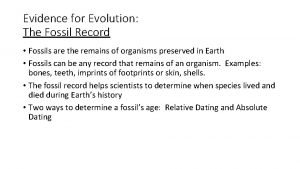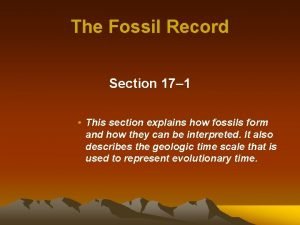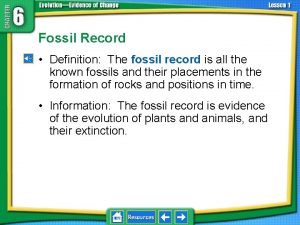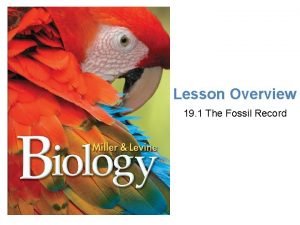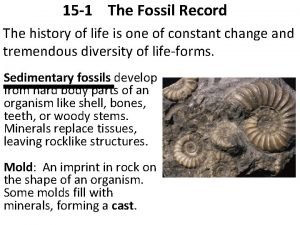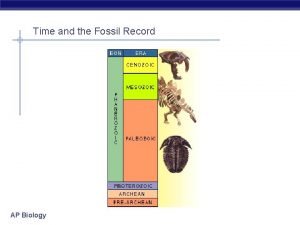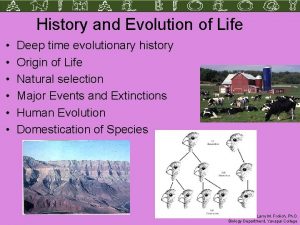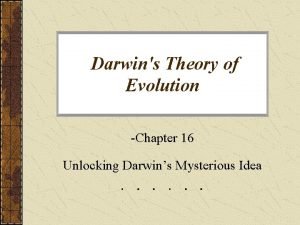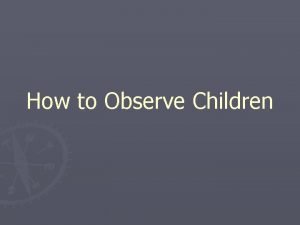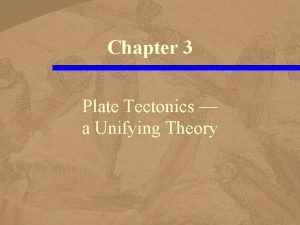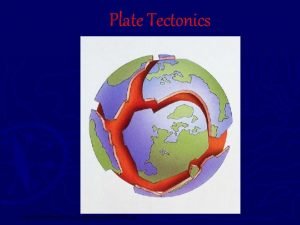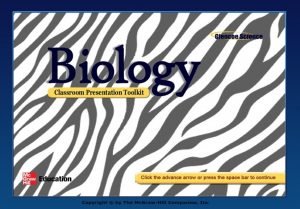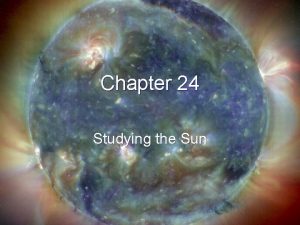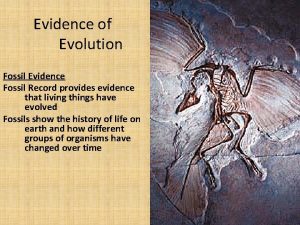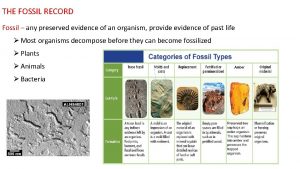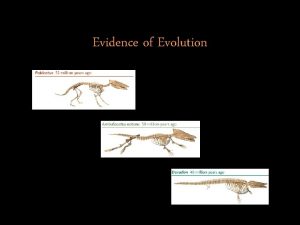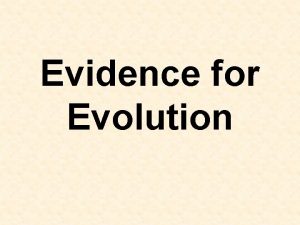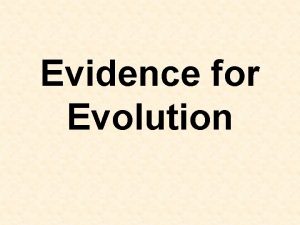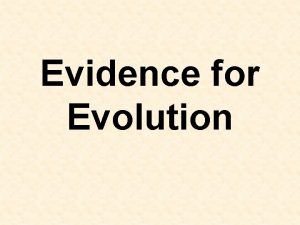Studying Fossil Evidence Chapter 17 The Fossil Record















- Slides: 15

Studying Fossil Evidence Chapter 17

The Fossil Record ü The fossil record provides evidence about the history of life on Earth. It also shows how different groups of organisms, including species, have changed over time (or evolved).

Dating Fossils ü Relative Dating ü Method of determining the age of a fossil by comparing its placement with that of fossils in other layers of rock. ü Radioactive Dating ü Method of calculating the age of a fossil based on the amount of remining radioactive isotopes it contains


Biological Diversity ü Biological Diversity (Biodiversity) ü The variety of living organisms found in a particular place ü The fossil record tells us what kind of biological diversity existed in a particular place at a particular time in history.

Mass Extinction ü Event in which many types of living things become extinct at the same time. ü We know of Mass Extinctions because of the fossil record.


Mass Extinction ü Mass Extinction means that MOST, but NOT ALL species went extinct during a short time period. ü Because of GREAT BIOLOGICAL DIVERSITY before a catastrophic event, some individuals of some species survive the event.

Mass Extinction ü Adaptive Radiation: When many species disappear, habitats and ecological opportunities are left open for survivors take over ü The result seems to be a burst of evolution that produces many new species ü For example, when the dinosaurs went extinct, that cleared the way for evolution of modern mammals and birds

The fossil record shows speciation ü By studying the fossil record, we can see how species change over time.

Tempo of Speciation ü Gradual Speciation ü Slow, steady change over time ü Punctuated Equilibrium ü Long stable periods interrupted by brief periods of rapid change.


Numbers of Species Which groups demonstrated the greatest biodiversity during the Cenozoic Period?

In Review: ü The Fossil Record shows us Biodiversity, Mass Extinctions, Speciation and Evolution ü Fossil Dating ü Relative Dating ü Radioactive Dating

In Review: ü Biological Diversity (Biodiversity) ü The number of species that exist ü Mass Extinctions ü Most species die off ü Those species left living, evolve into new species by taking over the habitats and ecological opportunities left by those that went extinct = EVOLUTION ü Tempo of Speciation ü Gradual Speciation ü Punctuated Equilibrium
 Examples of fossil evidence
Examples of fossil evidence Chapter 14 section 1: fossil evidence of change
Chapter 14 section 1: fossil evidence of change 17-1 the fossil record
17-1 the fossil record Defintion of fossil
Defintion of fossil What is the “fossil record”?
What is the “fossil record”? What is absolute age?
What is absolute age? Skeletal system
Skeletal system Fossil record
Fossil record Darwin viewed the fossil record as
Darwin viewed the fossil record as Example of running record observation of a child
Example of running record observation of a child Fossil and mountain chain evidence
Fossil and mountain chain evidence Pangea fossil evidence
Pangea fossil evidence Pangea fossil evidence
Pangea fossil evidence The history of life section 1 fossil evidence of change
The history of life section 1 fossil evidence of change Chapter 24 studying the sun
Chapter 24 studying the sun Lesson 1 studying geography
Lesson 1 studying geography
